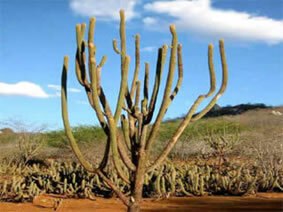Planet Earth is not static in the universe, as are all celestial bodies. It performs a series of movements involving the orbit around itself, around the sun, in conjunction with the Milky Way and the universe itself. Therefore, studying these movements means understanding a part of the dynamics of outer space.
The main movements of the Earth, that is, those that have the most noticeable direct effect on our lives, are the rotation and the translation.
THE rotation it is the movement that the Earth performs around itself, circling around its central imaginary axis for an approximate period of 24 hours, with a speed of 1,666 km/h. The rotation occurs in a counterclockwise direction, that is, from west to east, which makes the apparent movement of the sun to be from east (east) to west (west). The main consequence of this movement is the succession of days and nights.

THE translation it is the elliptical movement that the Earth performs around the sun, with a duration of 365 days, 5 hours and 48 minutes at a speed of 107,000 km/h. When the Earth completes a complete revolution in relation to the sun, we say that a year has passed. The main consequence of this movement is the origin of the seasons of the year, which occur because the axis of the planet presents an inclination of 23º27', causing the succession of
solstices and equinoxes.The translation movement is also called revolution.

In addition to these two main movements, Earth has three other important movements that do not have a very notorious influence on humanity, but which are important for giving rise to other movements. These variations are the precession, a nutation it's the perihelion displacement.
THE precession – or precession of the equinoxes – is the rotary movement performed by the projection of the earth's rotation axis in a clockwise direction, with a cyclical duration of 25,770 years. The main consequence is the anticipation of the equinoxes and the change in the apparent position of the celestial stars in the sky.
Do not stop now... There's more after the advertising ;)
THE nutation is a small periodic variation in the terrestrial rotational axis that occurs every 18.6 years due to the influence of the Moon's gravity on the Earth. There are no relevant consequences.
O perihelion displacement is the variation of the Earth's orbit around the sun. As we know, perihelion is the point in the orbit where the planet is closest to the solar body. Thus, this difference varies over time as a function of the influence of the orbits of other planets, with a cyclical repetition of 21,000 years.
In addition to these five movements presented, the Earth performs nine other minor movements that involve derivations of these cycles and transformations that occurred in conjunction with the universe.
Mind Map: Earth Movements

*To download the mind map in PDF, Click here!
One of these movements is the obliquity of the ecliptic, which is the variation between the plane of the Earth's orbit and the plane of the Equator, that is, the variation of the axis of inclination. This movement has a cycle of 42,000 years and causes the angle of this axis to vary between 22º and 24º30'.
There is also the orbit eccentricity variation, in which the Earth's axis of translation is sometimes more circular, sometimes more elliptical, having a cyclical duration of 92,000 years. There are indications that this movement is responsible for the Earth's great glaciations.
already the Earth-Moon center of mass movement indicates the orbit that the Earth-Moon system's center of mass makes around the sun. Likewise, the movement around the center of mass of the Solar System it is the movement performed by the Earth around the center of mass of the sun and all the planets that surround it.
Another interesting move is the tidal movement, in which there is a cyclic contraction and relaxation of the terrestrial globe under the influence of the Moon's gravity. The best known influence of this movement is the tidal variation.
The Earth also performs some unpredictable movements, with small variations in its orbits, a phenomenon caused by the influence of other solar planets, notably Venus and Jupiter. These movements are called planetary disturbances.
As the Sun also moves, it is observed that, concomitant with the translation movement, the Earth also performs a helical movement towards the sun itself.
The same is true of the Milky Way, which rotates around its center lasting 250 million years. The Earth, as well as the entire solar system, is part of this movement, which is called rotation along with the galaxy. However, as the universe continues to expand, the galaxy also moves, taking all its celestial bodies with it, which makes it considered the movement of translation along with the galaxy.

Milky Way Image
In summary, the 14 Earth movements are:
1) Rotation
2) Translation
3) Precession
4) Nutation
5) Displacement of the perihelion
6) Obliquity of the ecliptic
7) Variation of orbit eccentricity
8) Earth-Moon center of mass movement
9) Movement around the Solar System's center of mass
10) Tidal Movement
11) Planetary Disturbances
12) Helical Movement
13) Rotation along with the galaxy
14) Translation along with the galaxy
By Rodolfo Alves Pena
Graduated in Geography
*Mental map by Rafaela Sousa
Geography teacher



